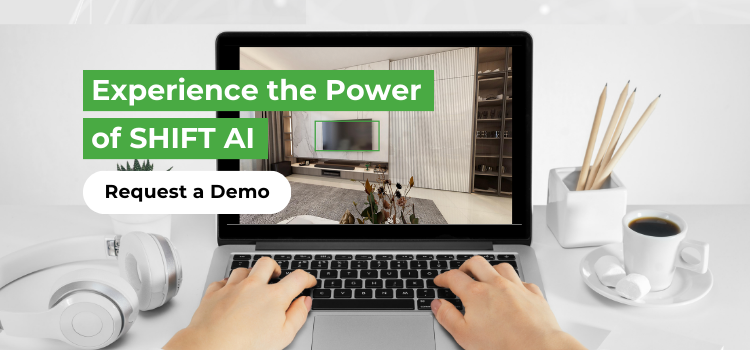Isn't it wild how much the workplace has transformed since 2020? With everything evolving so fast, the pressure to keep learning (and relearning) has never been higher.
Now, think about this: When you design an eLearning course, you're aiming for real results, right? But what if it's not hitting the mark?
Ever stopped to wonder why your team seems to forget what they've learned in your eLearning courses?
You're not alone in this. Often, the culprit is information overload.
Picture this: you're new on the job, and you're hit with a tsunami of data, facts, and figures. It's overwhelming, right? Neuroscience tells us that too much info all at once can lead to what's called 'cognitive overload'. Therefore, an eLearning course must be designed to facilitate learning so that knowledge can be retained in the long term.
But don't worry, we've got your back! In this article, we're diving into some nifty tricks and insights to help you design eLearning programs that stick in your learners' minds.
Let's take a closer look at why we tend to forget what we learn:
It's quite fascinating. A report from Practical Psychology on the Rate of Forgetting reveals that most of what we learn is lost within the first hour. And, believe it or not, within a couple of days, we typically forget about 75% of the new information.
The main reason? Our brains aren't equipped to retain everything after a single learning session. Additionally, not having enough practice or opportunities to apply the newly learned information plays a significant role.
Recommended read: These Are The Reasons Why Learners Forget Your Training
So, what steps can we take to improve learning retention?
This brings us to the concept of Spaced Learning, a strategy that's more relevant than ever in today's fast-paced learning environments.
What is Spaced Learning and Why is it Relevant Today?
Let's rewind to 1885. German psychologist Hermann Ebbinghaus introduced the world to the Forgetting Curve and the spacing effect. He found that we tend to forget things over time unless those learnings are actively reinforced.
Designing learning programs with spaced learning involves strategically timing the introduction of concepts and revisiting them after specific intervals. This could range from days to months, varying based on the complexity of the material and the learner's requirements.
Why is Spaced Learning so pertinent today? Let's break it down:
-
Adapts to Modern Attention Spans: With shorter attention spans in today's fast-paced world, spaced learning aligns well with the need for brief yet effective learning sessions.
-
Combats Information Overload: In an era of constant information influx, spacing out learning helps prevent cognitive overload, making information more manageable and retainable.
-
Facilitates Better Retention: Regularly revisiting material reinforces memory, greatly enhancing long-term retention.
-
Personalized Learning Experience: Allows for customization based on individual learning speeds and preferences, accommodating diverse learning styles.
-
Promotes Practical Application: Spacing enables learners to apply concepts between sessions, reinforcing learning through real-world application.
Pairing Spaced Learning with Microlearning proves particularly powerful. Microlearning breaks down information into compact, focused segments, which complements the spaced learning approach perfectly. This combination ensures that learners engage with content in short, manageable bursts over time, significantly boosting retention and application in the workplace. Together, they form an impactful duo in modern learning and development strategies.
Also read:
Decode the Science of Forgetting: How to Create Memorable eLearning [Part I]
Decode the Science of Forgetting: How to Create Memorable eLearning [Part II]
To effectively combat the Forgetting Curve and implement spaced learning in your organization, consider these actionable tips:
Tip #1: Drip Content
Incorporating a drip content strategy into your learning programs is akin to crafting a captivating story. It's about engaging your audience right from the start and then keeping them hooked with a steady stream of compelling content.
Here's how you can bring this strategy to life:
-
Start with a Hook: Kick off your training with a compelling introduction. This initial engagement is crucial for capturing your learners' attention and setting the stage for what's to come.
-
Gradual Release of Information: Think of your content as chapters in a story. Distribute it in small, digestible segments over time. This approach not only maintains learner interest but also caters to their cognitive load, preventing information overload.
-
Control the Learning Pace: Tailor the frequency of content release to suit the material's complexity and your learners' capacity to absorb information. This flexibility allows learners to process and understand the content fully before moving on.
-
Use Automation for Efficiency: To streamline this process, utilize tools like SHIFT Deploy or other similar applications. These tools enable you to automate the content delivery, ensuring that each learning segment is provided at just the right moment.
-
Set and Forget Scheduling: Once you've planned your content schedule, let the technology take over. By setting up your delivery schedule in advance, you can ensure consistent, timely dissemination of content without the need for ongoing manual management.
By adopting this drip content strategy, you're not just teaching; you're creating an engaging learning journey that keeps your audience excited and eager to learn more.
Tip #2: Develop a Robust Post-Course Content Refreshing Strategy
Securing knowledge retention is our endgame, right? To achieve this, the learning journey shouldn't end with the course completion. It's crucial to continue engaging your learners with refreshers and reminders. Imagine your course as a launching pad, with the real mission being to solidify that learning over time.
-
Regular Refresher Courses: Post-course, plan to roll out concise refresher modules. These should succinctly recap key concepts, helping to cement the learning in your students' minds.
-
Strategic Notifications: Use notifications or reminders to keep the learning material top-of-mind. Schedule these alerts to pop up at calculated intervals, gently nudging your learners to revisit and review the content.
-
Diverse Formats for Reminders: Diversify the format of these refreshers. From short videos to quick quizzes, mixing up the mediums can keep the content engaging and accessible.
-
Mobile-Compatible Reinforcement Activities: In today's mobile-centric world, it's essential to offer reinforcement activities that are easily accessible on smartphones. This approach means your learners can engage with the material conveniently, whether they're on-the-go or in-between tasks.
-
Job-Embedded Learning Opportunities: Instead of confining learning to a traditional training room, integrate spaced learning cycles into the flow of everyday work. This real-world application can greatly enhance retention and understanding.
-
Interactive and Engaging Formats: Leverage formats like simulations, scenario-based activities, evaluations, and online games. These not only make the learning process more enjoyable but also more memorable.
By implementing these strategies, you create a learning ecosystem that extends far beyond the initial course, offering your students the flexibility and support they need to truly absorb and apply their new knowledge, anytime and anywhere.
Recommended reads:
Is Your Company Embracing Just-in-Time Learning?
Start Thinking of Micro Learning Moments Now
Tip #3: Foster Active Practice and Integration of Content
It's one thing to revisit content; it's another to actively engage with it. Spaced repetition is key for retention, but incorporating spaced practice elevates this to a whole new level. Instead of relying solely on passive review methods like re-reading or re-watching, encourage your students to actively recall and apply the content. This approach is far more effective in forging long-term memory.
Here are some actionable tips:
-
Active Recall Exercises: Design activities that require learners to retrieve information from memory. For instance, prompt them with questions or challenges that necessitate recalling key concepts from the course.
-
Practical Application Opportunities: Create scenarios or case studies where learners can apply what they've learned. This not only reinforces the material but also demonstrates its relevance in real-world contexts.
-
Diverse Assessment Formats: Mix up the types of assessments you use. From true/false questions to scenario-based exercises, varying the format keeps learners on their toes and encourages them to engage with the content in different ways.
-
Cumulative Questioning: Include questions in each new lesson that cover both the current material and content from previous sessions. This strategy ensures ongoing engagement with the entire breadth of the course material, not just the most recent topic.
-
Encourage Reflection and Discussion: Foster a culture of discussion and reflection among your learners. Encouraging them to share their insights and experiences related to the content can deepen understanding and retention.
By integrating these practices into your learning strategy, you're not just teaching; you're empowering your learners to truly internalize and apply their new knowledge. This active engagement with the material transforms the learning experience from a mere transfer of information into a dynamic process of skill and knowledge development.
Also read: 6 Ways to Assess Your Students in eLearning
Tip #4: Leverage AI to Personalize the Learning Experience
In the realm of spaced learning, personalization isn't just nice to have; it's essential. With the diverse learning needs of each student, a one-size-fits-all approach simply won't cut it. This is where Artificial Intelligence (AI) can be a game-changer, transforming how content is delivered and experienced during the spaced learning journey.
Here are some tips for leveraging AI into your eLearning program development:
-
AI-Driven Content Delivery: Utilize AI to distribute micro-content that aligns with weekly challenges or learning milestones. The AI can assess each learner's progress and tailor the content accordingly, ensuring that each student is engaged at the right level.
-
Custom Learning Paths: Allow AI to create flexible learning paths where students can navigate the course content at their own pace. As they complete each challenge or level, the next one unlocks, maintaining a steady and personalized learning curve.
-
Automated Support and Challenges: AI can track learners' performance and behavior, identifying areas where a student might be struggling. In response, it can automatically send additional challenges or resources to help them master that particular section. Conversely, for students excelling in certain areas, AI can recommend more advanced challenges to keep them engaged.
-
Adaptive Learning Analytics: With AI, you gain insights into each learner's journey, enabling you to fine-tune the course content and structure. This data-driven approach ensures that the learning experience continually evolves to meet the diverse needs of your audience.
-
Interactive Feedback Mechanisms: Implement AI-powered tools that provide instant feedback to learners, helping them understand where they stand and what they need to focus on next.
Also read: How Artificial Intelligence is Transforming the eLearning Industry
Embarking on the journey of designing eLearning programs with spacing in mind can begin right now. By integrating these straightforward yet powerful tips into your course development, you're setting the stage for creating a truly impactful learning experience. Remember, the goal is not just to impart knowledge but to ensure that it sticks, resonates, and translates into real-world application for your students.
With the right strategies and tools, your eLearning courses can transform from forgettable information sessions into memorable, engaging, and highly effective learning experiences.
And the good news is, you don't have to navigate this path alone. We're here to guide you every step of the way, leveraging our expertise to maximize the impact and effectiveness of your courses.
Don't miss this opportunity to elevate your eLearning programs. Contact our team today and discover how to get started on crafting courses that not only educate but also inspire and endure in your students' memories.
Also read:
- Want Your eLearning Courses to Deliver Results? Avoid These Mistakes
- 4 Reasons That Your eLearning Course Isn’t Working, But Still Can








